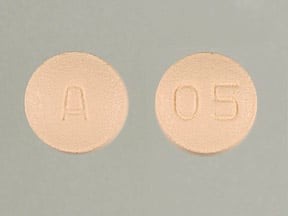
Celexa Coupons & Savings Card – Discount Prices from $9.75
Brand for: Citalopram
My prescription
Edit
10MG, Citalopram (30 Tablets)
Select pharmacy

CVS
$18.63
COUPON PRICE
Walgreens
$9.75
COUPON PRICE
Albertsons
$13.39
COUPON PRICE
Walmart
$15.52
COUPON PRICEFree Celexa Savings Card

Walgreens
$9.75
Show this coupon to your pharmacist
ID
LH8FBBF732
PCN
CHIPPO
BIN
019876
GRP
LHX
This coupon is not insurance
Related SSRIs prescriptions
More prescriptions for depression
Related SSRIs prescriptions
More prescriptions for depression
Price history for Celexa (brand) & Citalopram (generic)
30 Tablets, 10MG
Average retail price for Celexa
Average retail price for Citalopram
Average SaveHealth price for Citalopram
Our price history data is based on aggregated prescription data collected from participating pharmacies in America. Our prescription data updates daily to reflect the latest price changes. If you notice a missing data point, it means there wasn't sufficient data available to generate a monetary value for that date.
Over the last 12 months, the average discount price of Celexa is $16.31 using the SaveHealth savings card. That's an average savings of 95.93% on Celexa with our discount card.
*Retail prices are based on pharmacy claims data, and may not be accurate when we don't have enough claims.
Celexa (Citalopram) dosage forms
Dosage Quantity Price from Per unit 10MG 30 Tablets $9.75 $0.33 10MG 60 Tablets $10.49 $0.17 10MG 90 Tablets $19.89 $0.22 20MG 30 Tablets $9.92 $0.33 20MG 60 Tablets $10.84 $0.18 20MG 90 Tablets $19.89 $0.22 40MG 30 Tablets $10.25 $0.34 40MG 60 Tablets $11.49 $0.19 40MG 90 Tablets $20.61 $0.23
| Dosage | Quantity | Price from | Per unit |
|---|---|---|---|
| 10MG | 30 Tablets | $9.75 | $0.33 |
| 10MG | 60 Tablets | $10.49 | $0.17 |
| 10MG | 90 Tablets | $19.89 | $0.22 |
| 20MG | 30 Tablets | $9.92 | $0.33 |
| 20MG | 60 Tablets | $10.84 | $0.18 |
| 20MG | 90 Tablets | $19.89 | $0.22 |
| 40MG | 30 Tablets | $10.25 | $0.34 |
| 40MG | 60 Tablets | $11.49 | $0.19 |
| 40MG | 90 Tablets | $20.61 | $0.23 |
Celexa Warnings
The following information outlines important safety warnings and precautions associated with the use of citalopram (Celexa), an antidepressant medication. It is crucial to understand these risks and consult your healthcare provider for any concerns or specific guidance.
Worsening Depression and Suicidal Thoughts: Citalopram may increase the risk of worsening depression and suicidal thoughts, particularly in individuals 24 years old or younger. This risk is elevated during the initial weeks of treatment or when dosages are adjusted. Immediate medical attention is required if you or those around you observe suicidal thoughts or unusual behaviors such as anxiety, panic attacks, sleep disturbances, irritability, or restlessness.
Heart Rhythm Concerns (QT Prolongation): Citalopram can lead to a serious heart rhythm condition known as QT prolongation. This involves an abnormal delay between heartbeats and may pose life-threatening risks. Individuals with low potassium or magnesium levels, older age, kidney issues, pre-existing heart conditions, or those taking other QT-prolonging medications should exercise caution.
Serotonin Syndrome: A rare but potentially severe condition called serotonin syndrome may occur when citalopram is taken with other medications that increase serotonin levels. It is essential to be aware of this risk and seek immediate medical care if symptoms develop.
Withdrawal Symptoms: Abrupt discontinuation of citalopram can cause withdrawal symptoms, including nausea, anxiety, dizziness, and flu-like symptoms. Consult your healthcare provider for a safe and gradual discontinuation plan to avoid these effects.
Increased Bleeding Risk: Citalopram may heighten the risk of bleeding, especially when combined with medications such as aspirin, clopidogrel, or blood thinners. If you experience unusual bleeding, such as persistent bruising, black stools, or blood in vomit, seek medical attention promptly.
Bipolar Disorder: Citalopram should not be used alone to treat bipolar disorder, as it may trigger manic episodes. If you're at risk for bipolar disorder, discuss appropriate treatment options with your healthcare provider.
Glaucoma: Citalopram may trigger or worsen angle-closure glaucoma. Regular eye examinations are recommended, and any changes in vision should be reported to your optometrist or psychiatrist immediately.
Low Sodium Levels: This medication can cause low sodium levels in the blood. Symptoms such as weakness, headaches, trouble concentrating, or confusion require urgent medical evaluation, as low sodium levels can be life-threatening.
Contraindications: Avoid using citalopram if you are currently taking or have recently taken MAOIs, linezolid, methylene blue, or pimozide, as these combinations can pose serious health risks.
Always consult your healthcare provider before starting or stopping citalopram, and discuss any pre-existing conditions or concurrent medications to ensure safe use.
Celexa Side Effects
When taking this medication, some people may experience common side effects, which are usually mild. These include nausea, dry mouth, sleepiness, trouble sleeping, sweating, tremor, diarrhea, and ejaculation problems. Many of these symptoms are manageable, but if they persist or worsen, it is advisable to consult a healthcare provider. There are additional side effects that may occur, such as indigestion, upper respiratory tract infections, stuffy nose, changes in appetite, anxiety, and sexual health problems like low sex drive or difficulty achieving orgasm. These effects can be concerning but are generally manageable with medical guidance. However, there are some serious side effects that require immediate medical attention. These include suicidal thoughts or behaviors, abnormal heart rhythms, and symptoms of serotonin syndrome like fast heart rate and dizziness. Serious bleeding, such as unexplained bruising or black-colored stools, and low sodium levels characterized by confusion or severe fatigue, are also critical and necessitate urgent care. Seizures represent another severe side effect that demands prompt medical intervention. In very rare cases, males may experience a prolonged or painful erection lasting more than four hours, which requires immediate medical help to prevent permanent damage. Additionally, while allergic reactions are uncommon, symptoms such as rash, swelling, or trouble breathing should be addressed urgently. Always inform your healthcare provider of all medications you are taking to avoid interactions that might increase these risks. If you notice any other unusual effects, contacting your healthcare provider is recommended.
Celexa Interactions
Citalopram (Celexa) can interact with a variety of medications and supplements, which may affect its safe use. It's important to inform your healthcare provider about all the medications, supplements, and herbal products you are currently using. Some key interactions include:
Bleeding Risk: Citalopram may increase the risk of bleeding when taken with other medications that also cause bleeding or bruising. This includes antiplatelet drugs like Clopidogrel, NSAIDs such as Ibuprofen and Naproxen, and blood thinners like Dabigatran and Warfarin. Additionally, Aspirin can enhance this risk. If your physician has advised you to take low-dose aspirin (81-162 mg daily) for heart attack or stroke prevention, continue unless directed otherwise by your doctor.
MAO Inhibitors: Combining citalopram with MAO inhibitors (e.g., isocarboxazid, Linezolid, Metaxalone, methylene blue, moclobemide, phenelzine, procarbazine, Rasagiline, safinamide, Selegiline, Tranylcypromine) can lead to a severe and potentially fatal interaction. Avoid MAO inhibitors during and for two weeks before and after citalopram treatment. Consult your doctor on when to initiate or discontinue these medications.
Serotonin Syndrome: The risk of serotonin syndrome, a potentially life-threatening condition, may increase when citalopram is taken with other drugs that raise serotonin levels. This includes certain antidepressants (SSRIs like Fluoxetine and paroxetine, SNRIs like Duloxetine and Venlafaxine), street drugs like MDMA, St. John's wort, and Tryptophan. This risk is heightened when starting or increasing doses of these substances.
Drowsiness: Citalopram may cause drowsiness, which can be intensified when combined with alcohol, marijuana, antihistamines (e.g., Cetirizine, diphenhydramine), sleep or anxiety medications (e.g., Alprazolam, Diazepam, Zolpidem), muscle relaxants, and opioid pain relievers (e.g., codeine). Check all medication labels for drowsiness-inducing ingredients and consult your pharmacist about safe usage.
Heart Rhythm: Some drugs, including Amiodarone, Pimozide, procainamide, quinidine, and Sotalol, can affect heart rhythm (QT prolongation) when used with citalopram.
Similar Medications: Avoid using Escitalopram concurrently with citalopram, as they are closely related.
Lab Tests: Citalopram may interfere with specific medical or laboratory tests, potentially resulting in inaccurate results. Ensure all healthcare providers and lab personnel are aware of your citalopram use.
Your doctor may adjust dosages or monitor you closely if combining citalopram with some of these medications is necessary for your treatment. Always have open communication with your healthcare team to manage any potential interactions effectively.
What does Celexa do for a person?
Celexa, which contains the active ingredient citalopram, is an antidepressant medication that belongs to the class of selective serotonin reuptake inhibitors (SSRIs). It is primarily used to treat major depressive disorder by increasing the levels of serotonin, a neurotransmitter in the brain that helps maintain mental balance. This can help improve mood, sleep, appetite, and energy levels while reducing feelings of anxiety and depression.
Is Celexa similar to Xanax?
Celexa and Xanax are not similar. Celexa is an antidepressant in the selective serotonin reuptake inhibitor (SSRI) class, primarily used to treat depression. Xanax, on the other hand, is a benzodiazepine used to treat anxiety and panic disorders. They work differently in the brain and are used for different conditions.
What is the biggest side effect of Celexa?
The biggest side effect of Celexa (citalopram) is often considered to be its potential to cause or exacerbate suicidal thoughts or behaviors, particularly in young adults and adolescents. It is important for patients to be closely monitored for any changes in mood or behavior, especially when starting the medication or adjusting the dose. Other common side effects include nausea, dry mouth, and drowsiness.
What is the black box warning on Celexa?
Celexa (citalopram) carries a black box warning for an increased risk of suicidal thoughts and behaviors in children, adolescents, and young adults, particularly during the initial treatment period or when the dose is adjusted. It is important for healthcare providers to monitor patients closely for any changes in behavior or mood. Celexa is not approved for use in pediatric patients.
What is Celexa used for besides depression?
Celexa, also known by its generic name citalopram, is primarily used to treat depression. However, it is also prescribed for other conditions such as anxiety disorders, panic disorders, and obsessive-compulsive disorder (OCD). It may be used off-label for other conditions as determined by a healthcare provider.
